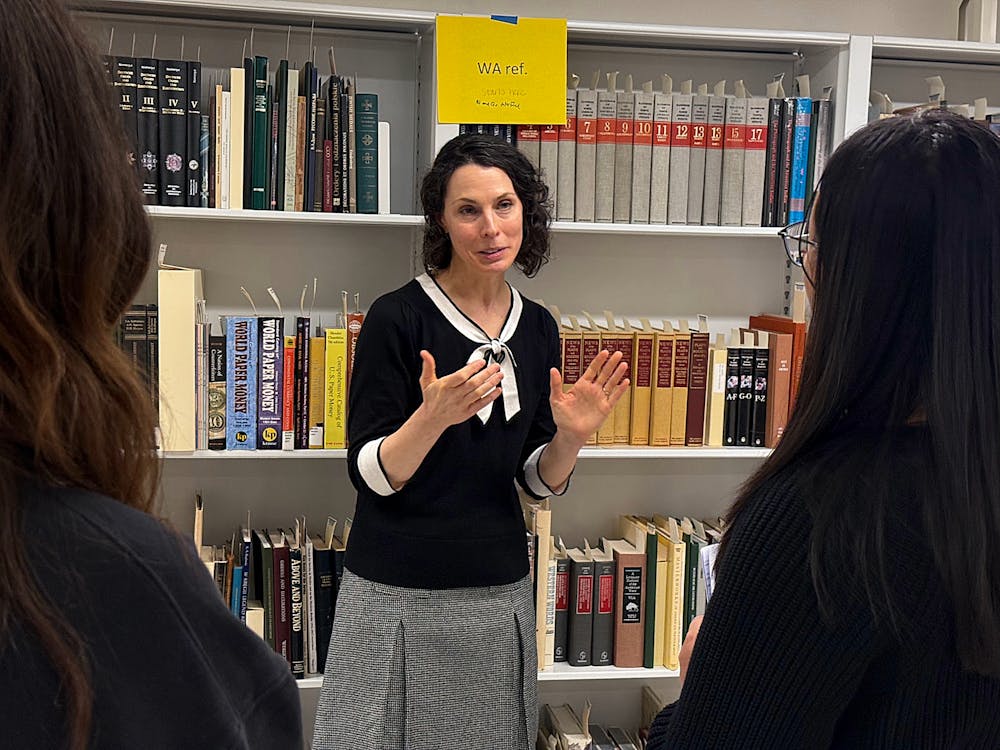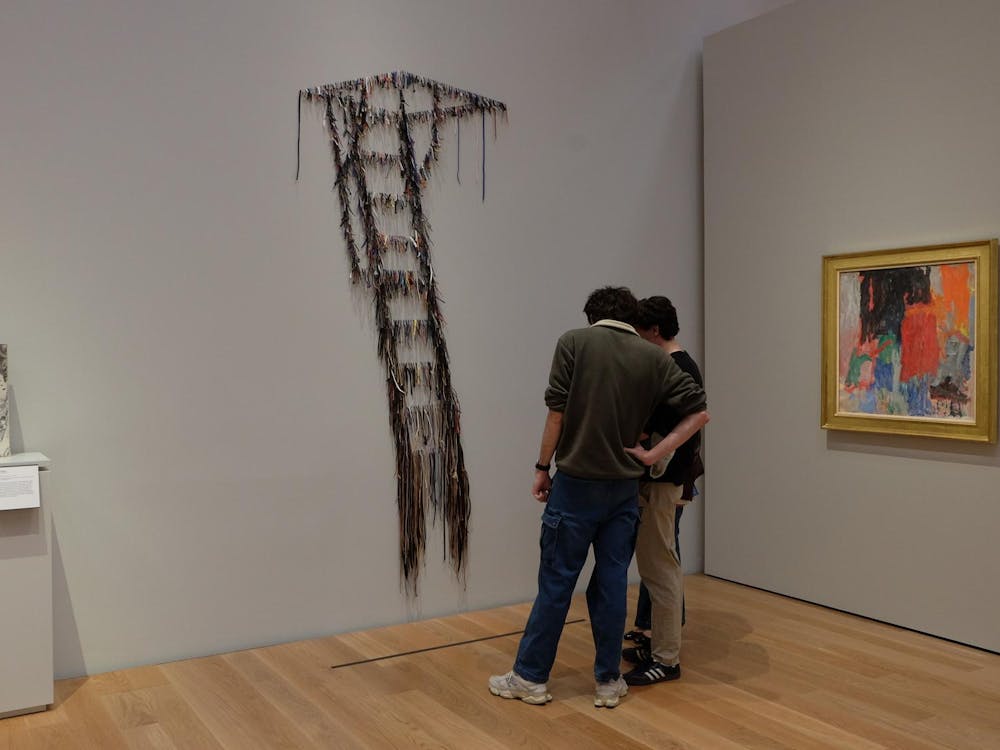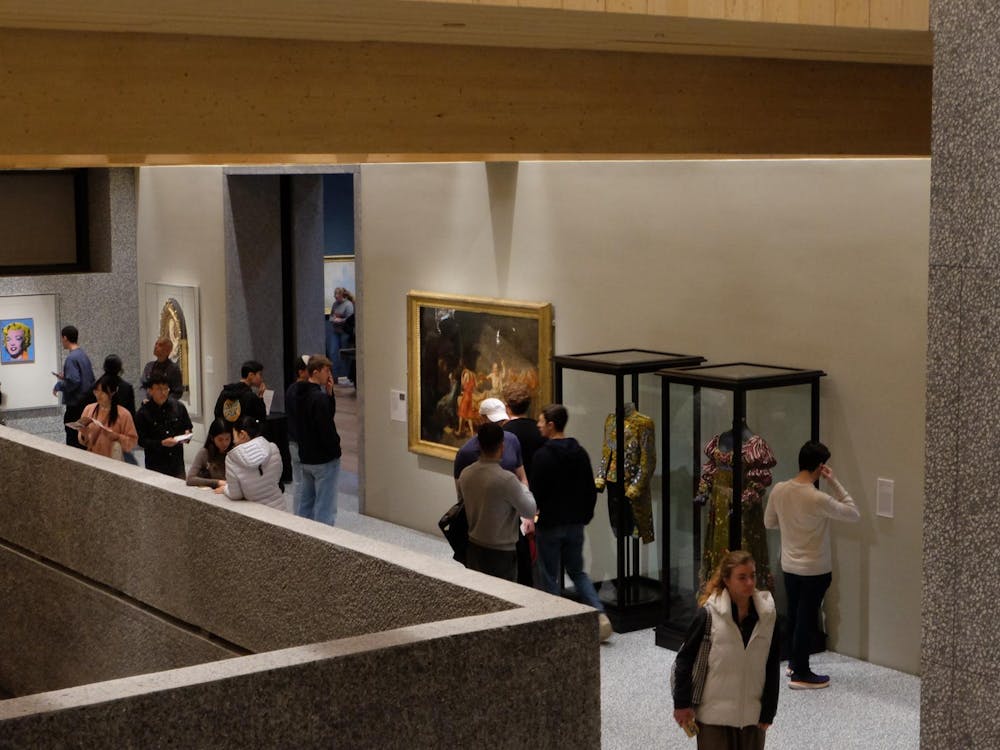Princeton University Library’s Special Collections hosts eccentricities from Abraham Lincoln’s death mask to a Victorian viewing device called a “peep egg” to Puerto-Rican government posters. Graphic Arts Librarian Molly Dotson handles those and more.
Dotson stewards over 25,000 books, journals, and manuscripts, as well as between 60,000 and 80,000 visual materials, housed in state-of-the-art facilities and viewable three stories deep in the basement of Firestone. She is responsible for spearheading ambitious new additions to the eclectic collections alongside furthering the library’s teaching mission; Special Collections as a whole hosted more than 300 classes in the 2024–25 academic year.
“We hope that we have something for everyone,” she said, highlighting the collection’s diverse strengths such as the Latin American Graphic Arts collection, which was recently expanded by a donation of works from Puerto Rican artists.
Dotson came to be interested in books after taking a studio art course “on a whim” in her first year of college.
“My interest in books as objects grew out of a student worker position in my college’s conservation lab,” she explained. This led to her seeking out more opportunities to work with books and share her interest with others.
By examining books as objects, researchers and curious visitors can study changes in binding, printing, and papermaking techniques, as well as particular artists’ or cultures’ styles. Included in the collection, and prominently featured in the classroom where Dotson and I met, was an “Albion Iron” Hand Press, which is a large metal contraption used to show how books were once printed in demonstrations and for classes.

Dotson poses next to the Albion Iron Hand Press.
Lucas Escobar / The Daily Princetonian
Special Collections frequently hosts class sessions, even for precepts, where students and professors can come to directly engage with materials.
Observing one of these classes that was led by Dotson, I was able to examine “books as objects” along with students in the Visual Design minor. Dotson laid out a variety of books, each of which illustrated an idiosyncrasy or bookmaking technique that the students could emulate in their own work.
Inspecting a 2023 edition of “1984” that was made out of other recycled books, Didi Vekris ’27 exclaimed, “You can see the words!”
Vekris and her classmates, Lila Ronen ’27 and Minh Truong ’27, inspected a piece titled “Every Building on the Sunset Strip.” The students, recognizing the piece from class, made observations about the materials and composition that went beyond what they could have discerned from the digitized version. The small book unfolded to nearly the length of the long table, reflecting the linear nature of the street that it depicted through many small photographs.
Other items on display included vividly colored pages and unorthodox representations of classic stories, as well as flipbooks bound in innovative ways to tell unique stories. “Various Small Fires and Milk” by Edward Ruscha and “Burning Small Fires” by Bruce Nauman, for instance, were created by separate artists in response to one another and are best appreciated by viewing the books together.

Dotson is working on increasing the representation of other cultures as well, collaborating with South Asian Studies Librarian Ellen Ambrosone to acquire art referencing COVID-19 within traditional folk art. “artwork that relates to the COVID-19 pandemic, but expressed in traditional folk art.”
This effort to diversify the collections also includes increasing the representation of novel materials and technologies. “Artists are not working exclusively in the book form, anymore,” Dotson observed, inspiring recent acquisitions such as a 3-D printed book.
Focus on bookmaking techniques predates Dotson’s time in the Graphic Arts Collections. The collection, described by PUL on its website as “devoted to encouraging students’ interests in collecting and collections,” was founded by book collector and designer Elmer Adler.
Princeton is unusual among its peers for giving students more access to its special collections, a point of pride that PUL noted in its responses to the ‘Prince.’
By modernizing its holdings, Special Collections is working to reach an even broader audience. “It’s been a key priority of the library for years to make as much of our collection available digitally as possible,” Oster told the ‘Prince.’
As the library’s holdings are becoming increasingly digitized, Dotson underscored the role of “books as objects.” She preserves books not only “as containers of information,” but also as “visual or material records.”
“We’re thinking about ways for students and visitors who come to use the collection to see themselves reflected back in materials they’re encountering,” she explained.
In this vein, initiatives like the Student Friends of PUL give free opportunities for students to appreciate the Library. Dotson’s own project, which she created in collaboration with Makerspace Specialist Ariel Ackerly — called the “zine” cart, short for “magazine” — gives more opportunity for students to network and interact.
I visited the Zine cart below the Lewis Library, where I coincidentally found Dotson at the first workshop of the “Making an East Asian Book: Japanese Paper Making” series. The cart has resources that students can use to bind books and create zines, and it has small pamphlets that provide guidance on using the resources.
“It can be really empowering to give students the possibility to put something of their own out into the world as a publication,” Dotson said. She also noted that students sometimes use the cart to complete assignments for class.
Dotson expressed hope that her efforts can help foster community, through groups such as a campus Bookbinding Society and initiatives such as the Adler Book Collecting Prize, of which she is the chair.
So, what can a book tell us? For Dotson, “It depends on the kinds of questions you’re bringing to the object.” Some visit the collections in search of a particular item with a specific research question in mind, while others find themselves trekking down simply to explore. Both of these types of people will find the Graphic Arts Collection open to their queries, and Dotson will be there there to help them navigate the maze of materials.
Lucas Escobar is a Features contributor for the ‘Prince.’
Please send any corrections to corrections[at]dailyprincetonian.com.








